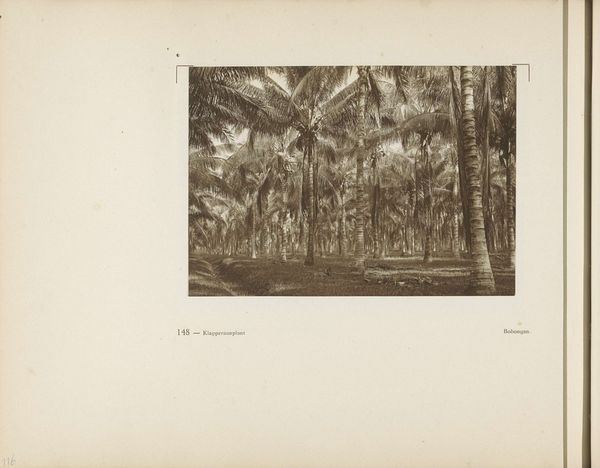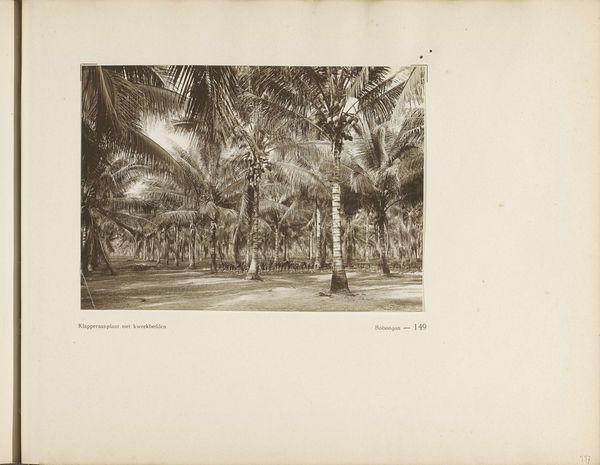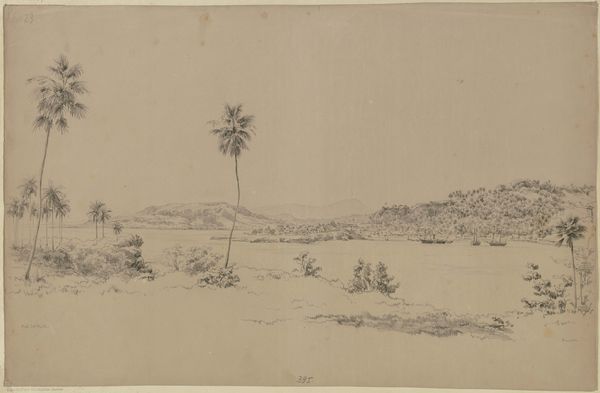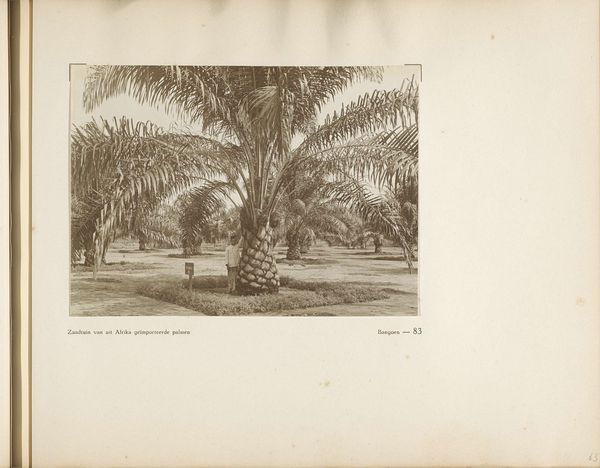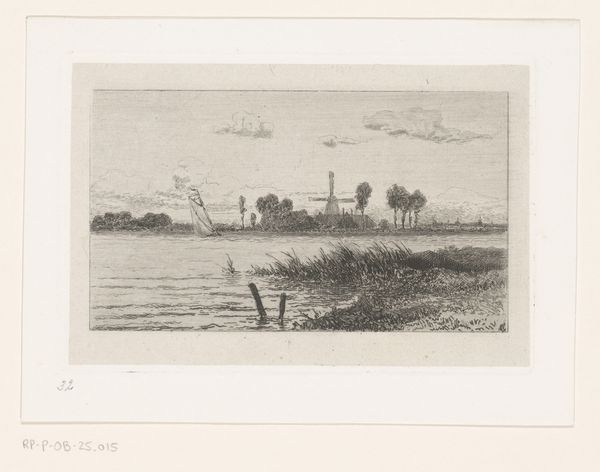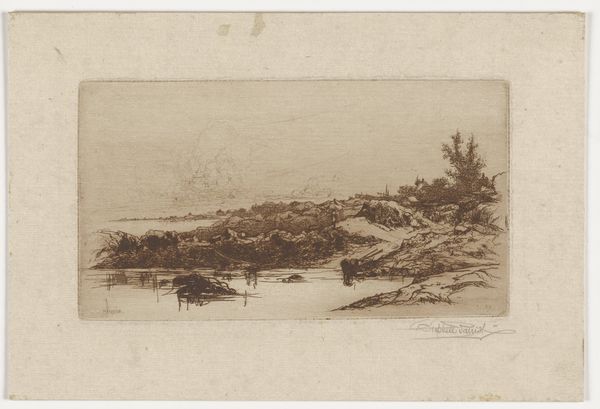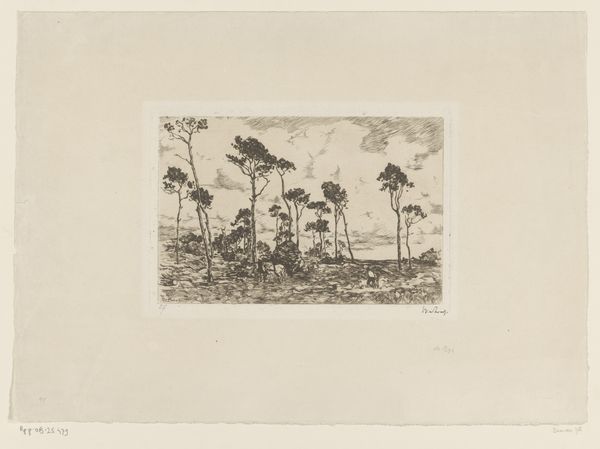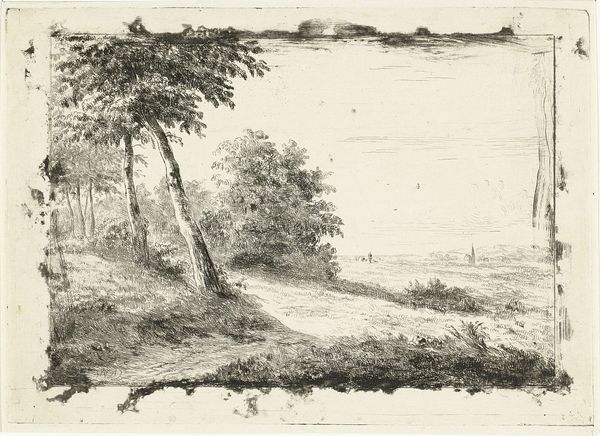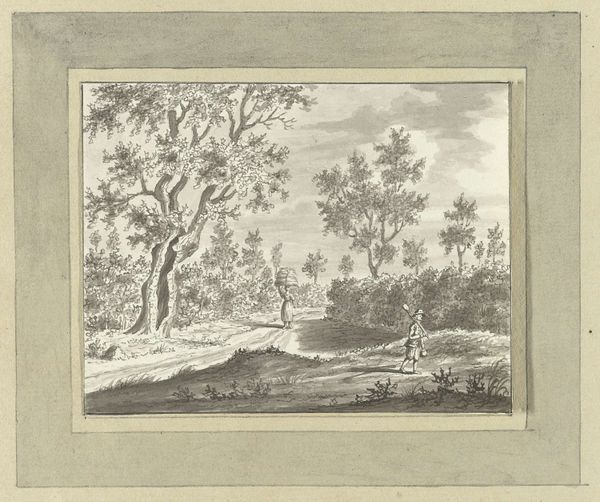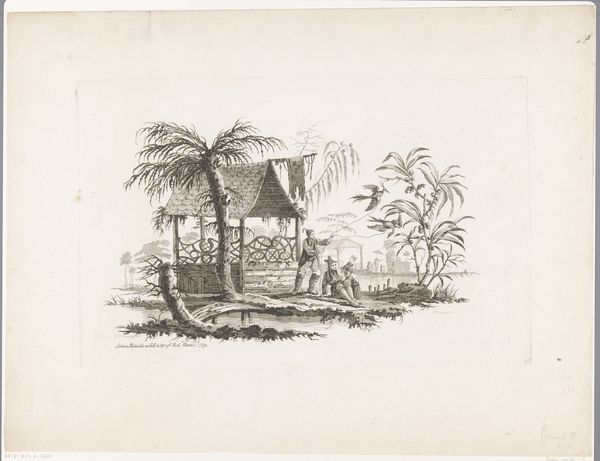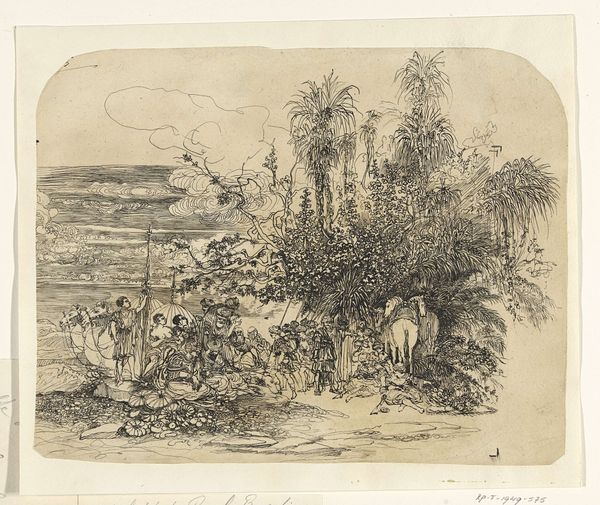
drawing, print, etching, paper
#
drawing
# print
#
etching
#
landscape
#
etching
#
paper
Dimensions: 235 × 312 mm (plate); 275 × 430 mm (sheet)
Copyright: Public Domain
Editor: This is Joseph Pennell’s "Bishops Walk, Ancon Hill, Panama," made in 1912, using etching. It's quite detailed, but also seems delicate, maybe because of the monochrome and the slightly faded look of the print. What strikes you most about its composition? Curator: The strength lies in its formal arrangement. Observe how Pennell employs the verticality of the palm trees to segment the pictorial space. The layering creates depth, but it also flattens the landscape, directing the gaze not towards a vanishing point, but across the surface of the work. How does that flattening affect your perception? Editor: I see what you mean. The palm trees are so close together that my eyes mostly move left to right, rather than into the scene. But I am wondering about the effect of the rough, scratchy lines he uses. Is this intended, or just a feature of the etching process? Curator: The mark-making is crucial. The density and direction of the etched lines generate light and shadow, creating a tactile surface. Notice how the artist uses short, broken lines in the foreground versus longer, more continuous lines to define the horizon. It establishes a haptic quality, inviting the viewer to engage with the materiality of the print itself. It's not just representation, it is a constructed reality, wouldn’t you agree? Editor: Yes, now that you point it out, it's not a photorealistic portrayal, but its own world built on the lines, shades, and structure within it. Curator: Exactly! It transcends mere depiction, entering into the realm of formal abstraction through meticulous and very evocative construction of space. The visual experience yields a powerful message. Editor: I understand so much better now. Looking closely at how Pennell plays with depth, line, and form provides a fascinating way into experiencing the art. Curator: Indeed. Approaching art through its inherent qualities encourages a far deeper and more rewarding engagement than a simple surface scan.
Comments
No comments
Be the first to comment and join the conversation on the ultimate creative platform.
